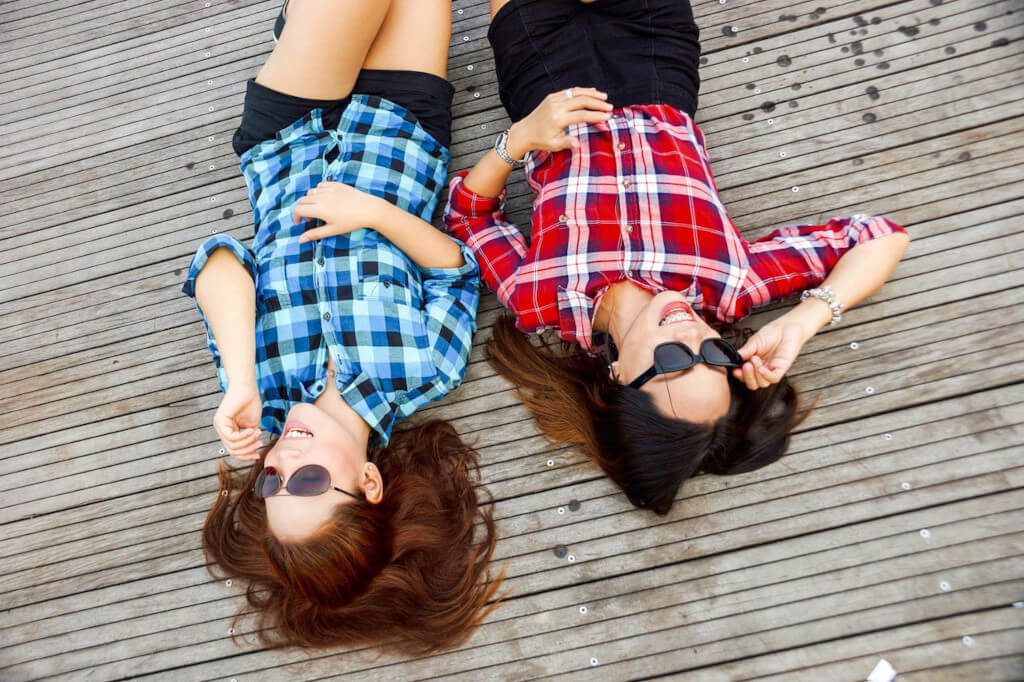What You Need to Know About Clothing That Offers UV Protection
It is essential to take measures to prevent sun damage to your skin, particularly if you spend a significant amount of time in the fresh air. Putting on sunscreen is an excellent way to shield yourself from the harmful rays of the sun, but it isn’t always enough protection on its own. Wearing clothing designed to block UV radiation offers an additional layer of defense against its potentially lethal effects.
Just What is the UPF?
The words “Sun Protection Factor” (SPF) and “Ultraviolet Protection Factor” (UPF) are widely applied whenever we are discussing ways to protect ourselves from the sun. They aren’t the same thing, despite the fact that they may have a similar sound.
SPF has become a term that is used to describe how efficient sunscreen is as a result of its increased usage. It indicates how much time it takes for UVB rays to cause the skin to turn red after it has been exposed to them. If you go outdoors with no protection and start to burn after twenty minutes, sunscreen with an SPF of fifteen should be able to protect your skin from the sun’s rays for fifteen times longer than it does on bare skin.
The amount of ultraviolet radiation (both UVB and UVA) that can penetrate a particular material and cause damage to your skin is referred to as the fabric’s UPF rating. You will be shielded from 98 percent of the sun’s potentially dangerous rays if you wear clothing with a UPF rating of 50. The remaining 2 % will work their way through the fabric.
Anything that has a UPF of between 30 and 40 is considered to be a “extremely protective layer,” while anything that has a UPF of 50 or higher is considered to provide “great protection.”
What Exactly Does “Sun-protective Clothing” Refer to?
There are some types of clothing that are better than others at shielding your skin from the sun. It is possible that the color and fabric of an item, in addition to other factors, will determine whether or not it is safe to wear the item outside in the sun. UV rays are able to penetrate everyday clothing thanks to the microscopic holes found in the weaves, and they can even go straight through a shirt of a light color. UPF clothing has a block that is significantly more effective, providing you with increased protection from the sun.
The vast majority of sun protection clothing comes in a variety of cuts and patterns of shirts, tights, and hats, and it has the appearance and texture of athletic or athleisure wear. And because it has a higher thread count than a standard T-shirt, it typically has a more opulent feel to it than a regular T-shirt would.
The most effective clothing can be found in colors that are either very dark or very bright. Because clothing with a high ultraviolet protection factor (UPF) can soak up UV rays and prevent them from penetrating the skin, dark colors like these offer superior skin protection compared to lighter ones. The ultraviolet protection factor (UPF) of your clothing is greatly influenced by the fabric.
Fabrics that are thick and opaque are preferred over those that are tightly woven and include wool and denim as examples. If you hold an article of clothing up to a light and are able to see light through it, you can generally get a good idea of how easy it will be for ultraviolet rays to penetrate your skin even while wearing the garment.
Furthermore, the components that go into the production of UPF clothing, and the make-up of the fabric itself can have an effect on its level of protection. When shopping for clothing that offers protection from the sun, keep an eye out for materials such as unbleached cotton, glossy polyester, satiny silk, and high-tech fabrics. Each of these options—reflecting UV rays toward space, filtering them out, or absorbing them—is available with each of these materials.
If you’re capable of wearing anything that is loose, your protection level will increase dramatically. When clothing is too tight, it flexes more easily, which decreases the amount of UV protection it provides. Because the type of clothing you wear can also affect how well your skin is protected from the sun if you have to choose between a shirt with short or long sleeves in order to shield your arms from the rays of the sun, opt for the shirt with the longer sleeves. Oftentimes, sun protection clothing will have UPF labels sewn into them, much in the same way that the vast bulk of sun protection lotions will have SPF markings on the bottle.
What Aspects of the Environment Have an Impact on the Sun Protection Provided by Clothing?
The vast majority of garments offer some protection from the layers of the skin that are exposed to UV radiation. When determining the UPF of an article of clothing, a number of different factors are taken into consideration. The same criteria can be used to evaluate how well a typical article of clothing shields the wearer’s skin from the sun’s ultraviolet rays.
Dyes
Although wearing darker clothing is generally preferable to wearing lighter attire in terms of UV protection, the sort of dye used to color the fabric has an effect on how effectively it blocks UV rays. The greater the concentration of UV-blocking properties that a dye possesses, the greater the number of UV rays that it is able to block.
Treatments
UV light-absorbing materials may be incorporated into the production of clothing at a number of different stages throughout the manufacturing process. The ultraviolet protection factor (UPF) rating of a garment can be improved by using laundry additives like brighteners and chemicals that disrupt UV radiation.
Weave
The level of protection offered by a material is directly proportional to the density of its weave. Holding an article of clothing toward the light will help you determine how closely the threads are woven together. It is possible that the weave is too loose to effectively block the sun’s rays if light can be seen passing through it.
Cloth
Some fabrics, such as cotton, flax, rayon, and hemp, might not be able to effectively screen UV radiation if they are not subjected to additional chemical processing. Some materials, such as wool, polyester, nylon, and silk, are better than others at blocking the radiation that the sun emits.
Stretch
It is plausible that stretchy clothing provides less protection from the sun’s ultraviolet rays than clothing that does not stretch.
What Kinds of Clothes Offer the Most Effective Protection Against the Sun?
High-density Fabric
It’s not always the case that wearing more layers of clothing provides additional protection. The concentration of a fabric’s weave is the primary factor in determining how well it blocks ultraviolet (UV) rays. The denser the weave or knit, the tinier the holes, and the fewer UV rays are able to penetrate the fabric.
Colors That Are Dark or Bright
It is a known fact that darker colors soak up more UV rays than lighter colors, such as white and pastels. Brighter colors also absorb more UV rays than darker colors. For example, red is an attention-grabbing color that also protects against UV rays. The intensity of the color contributes to an increased level of protection.
Why Should You Spend Money on Clothing That Protects You From the Sun?
You can have full faith that the sun-protective properties of the textiles used in sun protection clothing that has been vetted and approved by experts. It is difficult to assess the level of protection that your garment provides if the fabric it is made from has not been subjected to rigorous testing. It is possible that a typical T-shirt has a UPF of only 5, which is the same as using sunscreen with an SPF of 5, and indicates that 20% of UV rays are able to penetrate the fabric.
On the other hand, a fabric that has been put through rigorous testing and been awarded a UPF50 certification, which is analogous to applying sunscreen with an SPF50 rating, can block at least 98 percent of UV rays.
Clothing designed to protect you from the sun incorporates practical design elements to minimize the amount of direct sunlight that reaches your skin. Sun protection is the primary consideration that goes into the development of sun-protective clothing and sun hats. Sleeves, thumb holes, and necklines are common features found on sun-protective clothing. These features allow you to cover the backs of your hands and protect them from the sun.
A sun hat with the ability to protect you from of the sun will have a wide brim in addition to other features, such as a flap in the shape of a legionnaire to cover your ears and neck. If you wear specially designed clothing with a sun protection factor of UPF 50, you can avoid overheating in hot, sunny conditions. Furthermore, to having a great UPF 50 rating, sun protective gear is designed with a focus on functionality, and it makes use of fabrics that are comfortable to wear, light, and ultralight.
Recommended by Professionals in the Medical Field
The majority of dermatologists concur that wearing sun protective clothing and hats with wide brims is the most effective way to shield your skin from the harmful effects of ultraviolet light. Because sunblock can rub off or lose its effectiveness due to sweat or movement throughout the day, wearing a shirt with a UPF50 rating is the equivalent of utilizing an SPF50 sunscreen with greater assurance. In order to keep the same level of protection, the majority of people typically use significantly less sunscreen than is suggested and fail to reapply it at the designated intervals of 2 hours. As a consequence of this, they are more likely to develop skin cancer, premature aging of the skin, and sunburn.
It is Estimated That Up to 90% of Skin Aging Can Be Attributed to Prolonged Sun Exposure
The best way to maintain youthful skin is to stay out of the sun as much as possible; forget about moisturizing products and cosmetic procedures. The sun causes damage to the proteins that are found in our skin, which, over time, causes us to appear older than we really are. To look on the bright side, it is possible to forestall this type of aging by protecting oneself adequately from the sun.
It is an Investment in Your Long-term Well-being and Should Not Be Overlooked
Wearing clothing that provides protection from the sun shields our skin, which is our largest organ, and we cannot replace it with another organ. If you make an early investment in reliable sun protection with an SPF of 50, you may be able to avoid paying for it with your skin in the future.
Conclusion
When it comes to protecting yourself from the sun in the summer, it’s a good idea to wear clothing with a high ultraviolet protection factor (UPF). If for some reason it is not possible to purchase clothing with a UPF rating, you should instead wear full-coverage clothing that can effectively protect you from the sun. Accessories such as hats, sunnies, and scarves are examples of items that can be worn to help reduce the risk of injury.

